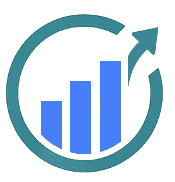In my previous article, it was established that the definition of change readiness proffered by Armenakis et al. is both founded in empirical research and prevails most prominently in the readiness literature. In fact, later research by Armenakis et al. (2006, 2007) confirmed that an individual’s overall evaluative judgement that he or she is ready for organizational change is influenced by her/his belief that:
- The change is needed
- That he or she has the capacity to successfully undertake change,
- That the change will have positive outcomes for his or her job role, and
- That management will provide the support and resources necessary to sustain the change.
This later research leads us to a few possible conclusions regarding the antecedents to readiness. Specifically:

These four core factors that influence an individual’s willingness and ability to embrace organizational change form the foundation of change readiness, each playing a crucial role in fostering a positive, receptive environment for organizational transformation. Perceived necessity, whether the change elicits a positive or negative response, the confidence stakeholders have in their capacity to execute successfully, and the belief that management is committed to providing ongoing reinforcement, resources, and encouragement to sustain the change are essential components for readiness. Equipped with this knowledge, change agents can assess the organizational environment’s readiness in several ways:

Surveys are by far the quickest and easiest way to collect respondent data. They also tend to be a very cost-effective way to gather readiness information. One of the principal limitations of surveys, especially custom developed surveys, is that most people lack the survey development skills to create surveys that actually measure what they intend. Most of the readiness surveys generally available are psychometrically dubious, at best. Consider, instead, the Organizational Readiness for Implementing Change (ORIC) developed by Bryan Weiner (2014). It ticks all the boxes for questions of design, reliability, and validity. There are others, of course.

Individual interviews are most effective for gaining insight into particular stakeholders’ perspectives. They are ideal when you need in-depth, personalized insights, especially if stakeholders might not share openly in a group setting. The downside is that they are time-consuming and labor intensive, both in terms of conducting the interviews and in consolidating findings. Common themes are relatively easy to articulate, but it can be more challenging to represent dissenting opinion when the sample size is small and the population known.

Focus groups work best when a broad, efficient sampling of perspectives are needed, particularly when group interaction may enrich insights. The group dynamic can reveal understanding that may not surface in individual settings. On the other hand, some in the group may hesitate to share openly, leading to a risk of groupthink where participants conform to the dominant opinion.
Choosing among surveys, interviews, and focus groups depends on your specific goals, the nature of your stakeholders, the resources available, and the depth of insight you require. If you’re uncertain, consider a mixed-method approach. Begin with a survey to identify broad themes and trends, then use focus groups for interactive exploration or interviews to dive deeply into key issues with specific stakeholders. This layered approach provides both breadth and depth, yielding a well-rounded view of stakeholder perspectives.
